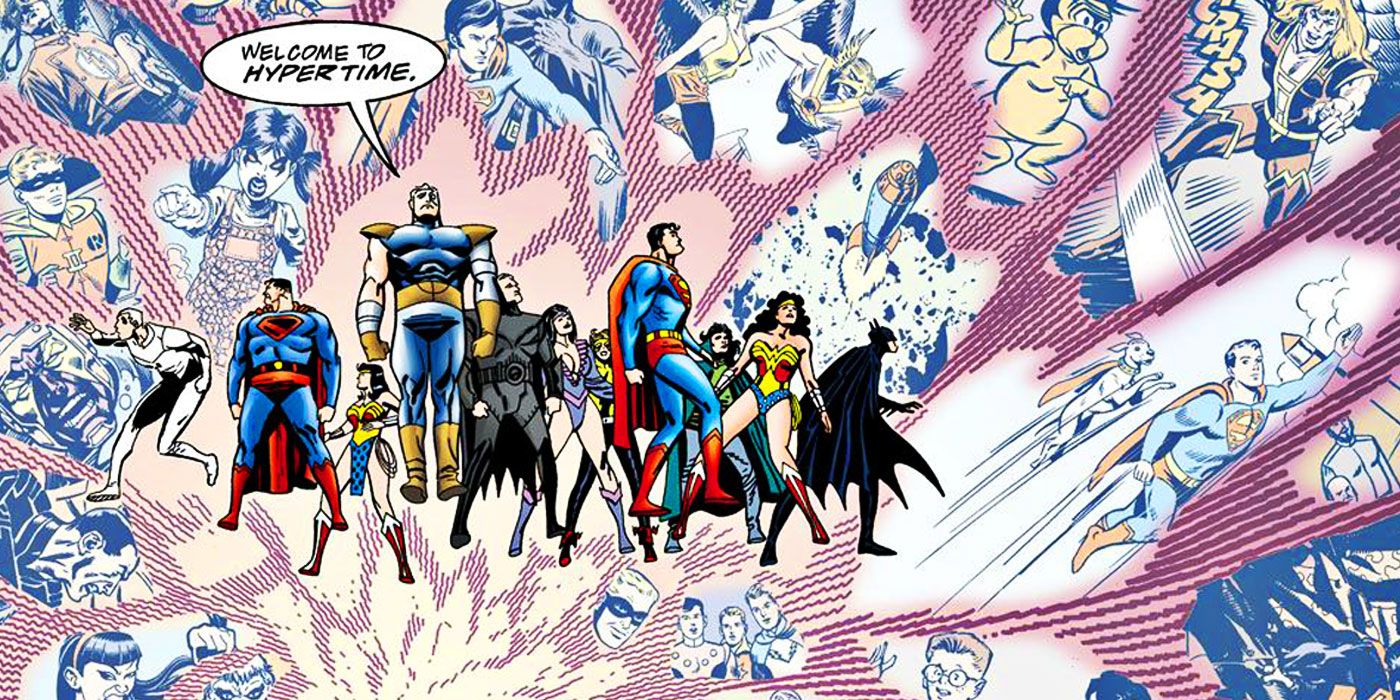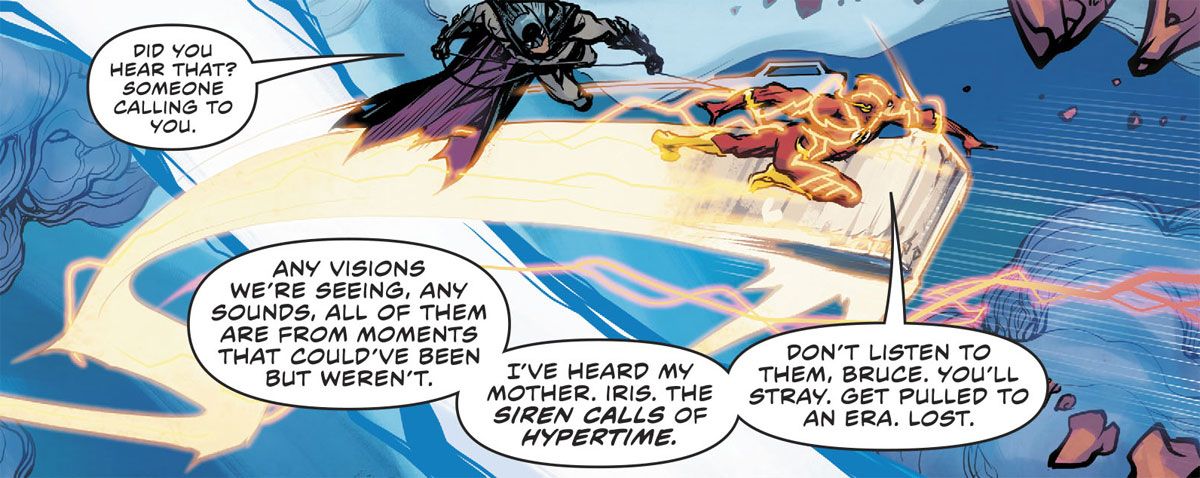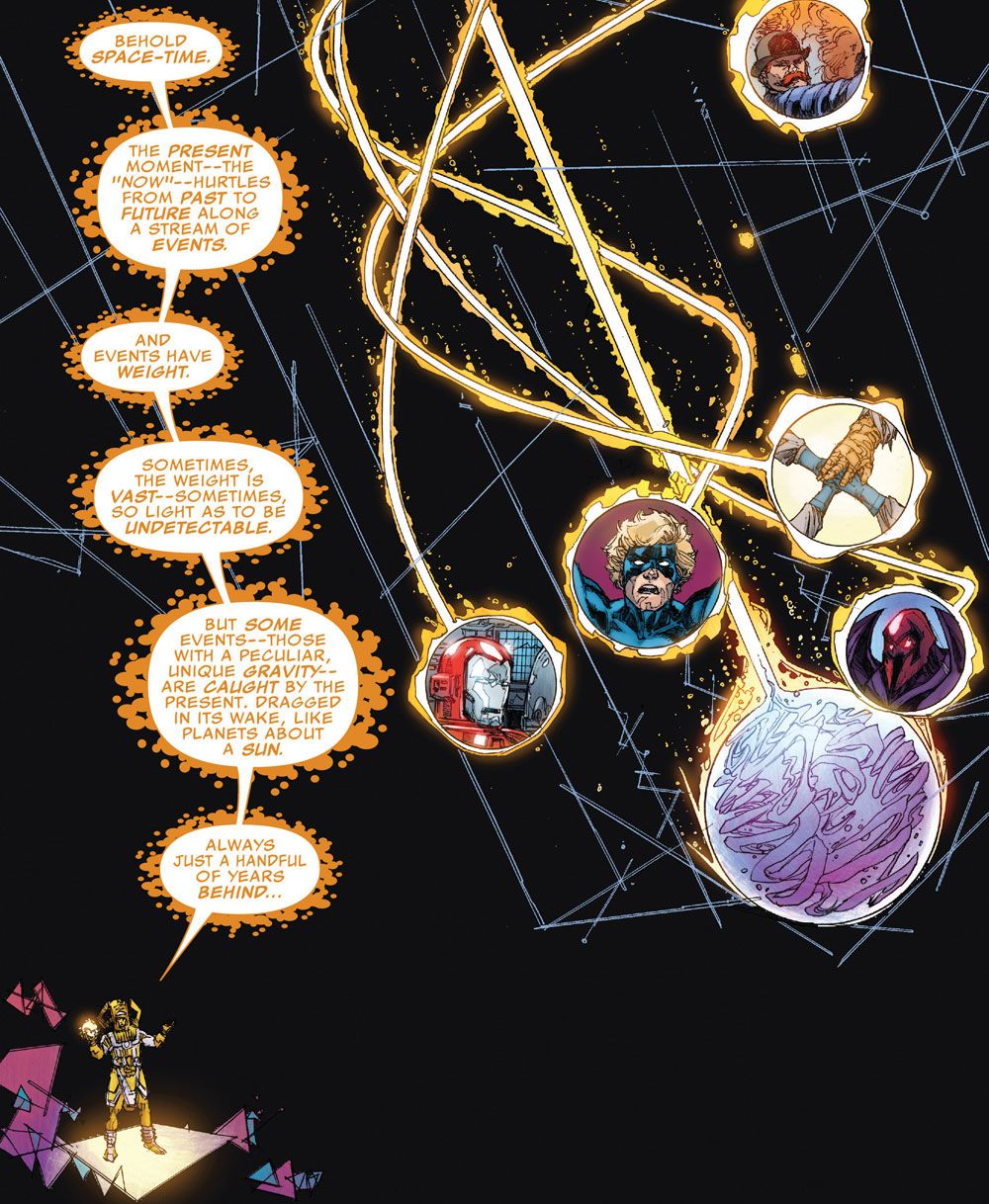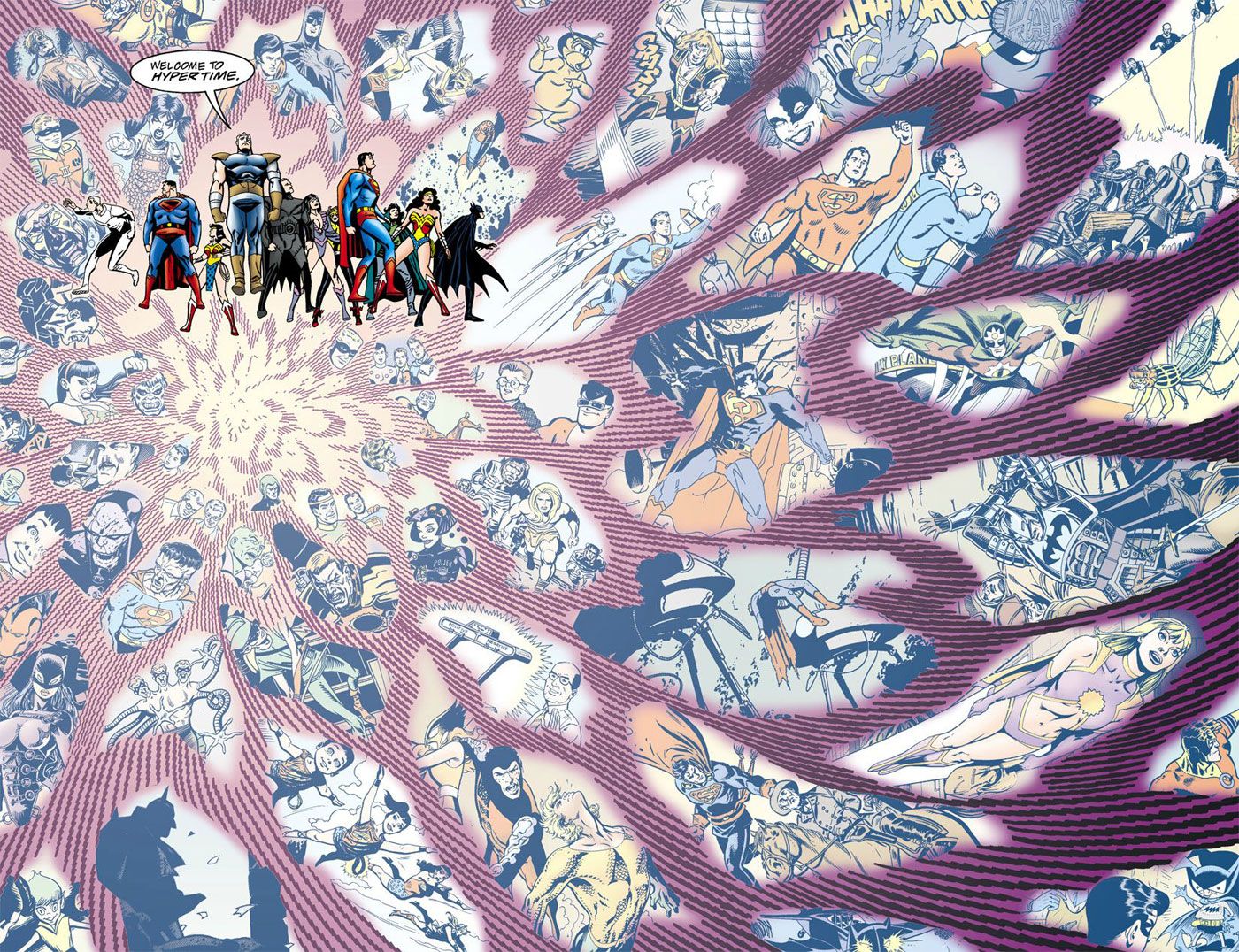The latest issue of The Flash, by Joshua Williamson, Howard Porter, Hi-Fi and Steve Wands, gave us the shocking end to “The Button.” But in an almost throwaway line, the issue also re-introduced a fundamental concept of the DC Universe which may solve all of the continuity problems the heroes are suffering lately. Hypertime is back, but it never really went away. If we’re going to understand the past and future of the current DC Universe and its continuity, the clues may lie in Hypertime but first we must understand what it is and how it works.
RELATED: [SPOILER]’s Arrival in The Button Sets the Stage for Doomsday Clock
Hypertime was first introduced in Mark Waid’s follow-up to Kingdom Come, The Kingdom; a series of one-shots focusing on different characters of that universe. The previous decade’s Crisis on Infinite Earths had streamlined DC’s continuity to one single universe, but that led to more problems down the line when writers wanted to introduced alternate versions of heroes and villains. Hypertime was created to solve that conundrum.
The best way to visualize Hypertime is as if it were a river, with the main stream being the timeline of DC Universe. This river can branch off into tributaries at any time, and they can run far and away on their own away from the course of the main river, or they can fold back into it later down the line. Then, there are streams that originate at other points that can sometimes meet up with the main river and become part of it. That’s essentially how Hypertime works.
What that means is there’s a central timeline for the DC Universe, from which alternate realities can splinter into their own timelines or alternate realities can be incorporated into the prime one. Waid was the most prolific adopter of the concept, especially with his work on The Flash which introduced The Kingdom’s Kid Flash and an alternate reality “Dark Flash” but it also played big parts in other DC Comics at the time, including Tom Peyer and Rags Morales’ Hourman, and Karl Kesel and Tom Grummet’s Superboy.
RELATED: Is Superboy Prime The Real Villain Behind DC Comics’ Doomsday Clock?
The concept was officially abandoned by DC in 2005 with the advent of Infinite Crisis, which instead used Superboy Prime’s reality-altering punches to explain then-current retcons or continuity errors. It had been mentioned a number of times over the years, often in relation to Booster Gold and his own time-travelling adventures but it hasn’t been used as the core explanation for how time works in a superhero universe for the past seventeen years.
This week’s issue of The Flash featured Barry Allen and Batman racing past “the siren calls of Hypertime” which are described by The Flash as moments that could have been but weren’t, but it seems that on a larger scale across the DC Universe, Hypertime has been adopted as the way to bring back the old DC Universe and undo many of the changes made by The New 52. Batman even tells Barry that these moments are real, which gives credibility to any Hypertime related continuity changes further down the line.
The biggest example of Hypertime’s effect on the current DCU is the recent “Superman Reborn” story which took place in Superman and Action Comics. At its conclusion, a new history had been established in which Clark Kent and Lois Lane’s pre-Flashpoint continuity was merged with that of their post-Flashpoint/New 52 selves. The new history features them meeting and falling in love, but also keeps many of the New 52 Superman stories intact, though it notably erases everything about the headline-grabbing Superman/Wonder Woman relationship from several years ago.
That’s not the only example of Hypertime DC's stories have recently displayed, however, as the Titans have been dealing with their own stolen history. When The New 52 launched, the original Teen Titans of Nightwing, Arsenal, Wonder Girl, etc., were revealed to have never been a team. Recent events have retconned that history, though, to bring back the classic incarnation of the team. Roy Harper in particular has seen his timeline stretched and altered, as recent issues of Green Arrow put his time as Speedy as roughly a decade ago, when The New 52 timeline was previously presented as nebulously five years hence from the Justice League’s first team-up.
RELATED: Superman and Wonder Woman’s DCU Romance No Longer in Continuity
Marvel Comics' own sliding timescale has always been something akin to Hypertime, as events in the past and the future would be shifted and re-adjusted based on what was necessary. In last year’s Ultimates #5, Al Ewing and Kenneth Rocafort established that this was essentially Hypertime in all but name, as the team viewed the timestream from the outside with the aid of Galactus. There, they saw a central stream, with smaller streams swirling around it, as Galactus explained that the important moments from these smaller events are often caught in a gravitational-like pull by the main timeline and folded into its history.
So, Hypertime is back -- and yet, it never went away. What that means is that DC Comics only disavowed it for a decade, but it was always there in the core of anything with a shared universe and an ongoing continuity. How does Judi Dench play the same character in the rebooted James Bond franchise? Hypertime. How do the new Star Wars films link with the previous canon? Hypertime. Even the changes to the timeline in the Arrowverse are essentially the result of Hypertime fixing The Flash’s mistakes where it could, and now John Diggle has a son instead of a daughter. Hypertime, at its core, is just writers, artists and editors deciding that something should be different from what it was before; it's the fictional representation of artistic license.
RELATED: Why Are Fans Embracing DC’s Rebirth After Rejecting Before Watchmen?
“The Button” is just the latest step when it comes to fixing DC’s broken continuity and timeline, and while it’s all leading to Doomsday Clock, it’s the month-to-month comics that are really establishing that there’s a larger force at work when it comes to DC's history resetting itself. Hypertime was mentioned off-handedly in this week’s issue of The Flash but it may be the most important part of figuring out what the heck is going on. The issue even specifically ends with Doctor Manhattan’s quote about how he percieves time differently to everyone else, so don’t be too surprised if Hypertime plays a big factor in fixing the DC Universe later this year.




